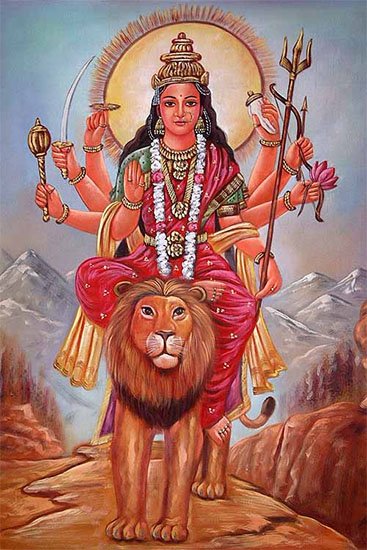Nilamegha, Nīlamegha, Nila-megha: 1 definition
Introduction:
Nilamegha means something in Hinduism, Sanskrit. If you want to know the exact meaning, history, etymology or English translation of this term then check out the descriptions on this page. Add your comment or reference to a book if you want to contribute to this summary article.
In Hinduism
Shaktism (Shakta philosophy)
Source: Google Books: ManthanabhairavatantramNīlamegha (नीलमेघ) refers to a “dark storm cloud”, according to the Śrīmatottara-tantra, an expansion of the Kubjikāmatatantra: the earliest popular and most authoritative Tantra of the Kubjikā cult.—Accordingly, while describing Trikhaṇḍā: “[...] She has three sections, three faces, a divine form and large belly. [...] (The second face) is dark like a storm cloud [i.e., nīlamegha-samaprakhya] and the eyes red as blood. It has fierce fangs and is adorned with snakes for earrings. The expression is mildly fierce and a skull (adorns) the topknot on the head. The third face is on the left. It is yellow and red and shines with brilliant rays, its light (pure) divine radiant energy. It is beautiful with many gems and the ears are adorned with earrings. It bears a radiantly brilliant diadem and crown”.

Shakta (शाक्त, śākta) or Shaktism (śāktism) represents a tradition of Hinduism where the Goddess (Devi) is revered and worshipped. Shakta literature includes a range of scriptures, including various Agamas and Tantras, although its roots may be traced back to the Vedas.
See also (Relevant definitions)
Relevant text
Search found 1 books and stories containing Nilamegha, Nīlamegha, Nīla-megha, Nila-megha; (plurals include: Nilameghas, Nīlameghas, meghas). You can also click to the full overview containing English textual excerpts. Below are direct links for the most relevant articles:
The Brahmanda Purana (by G.V. Tagare)
Chapter 20 - Description of the netherworlds (pātāla) < [Section 2 - Anuṣaṅga-pāda]